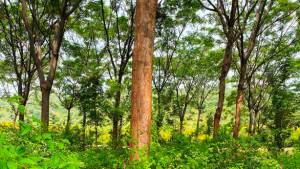Return of the Safari Rally to WRC
One of the must-do things this year for any motorsport enthusiast, has to be to watch the Kenya Safari Rally. After a long gap of 18 years, it is back on the World Rally Championship (WRC) calendar and will be held from July 16 to 19, 2020, in Kenya. After a sustained and committed effort by the Kenya Motorsports Federation and the African nation's President Uhuru Kenyatta himself, last year in September the Federation Internationale de l'Automobile (FIA) President Jean Todt said, "I want to thank President Uhuru Kenyatta for his support, commitment and desire to have the iconic Safari Rally return to the WRC." The President in his message to the nation, beamed on a giant screen at the Kenyatta International Convention Centre, said, "Before I assumed office in 2013, I made a promise to the people of Kenya, to return the Safari Rally back to the International Automobile Federation World Rally Championship family. The Safari rally is part of Kenya's heritage since its inauguration back in 1953. Kenya has worked hard to successfully bid to win a return to the WRC. We are happy to welcome WRC back home to where it belongs, as this iconic event is part of our national heritage."
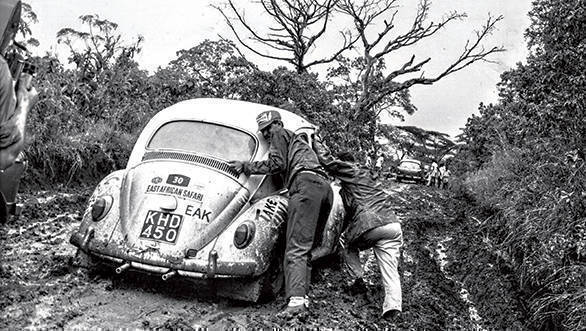 Very rare shot from the EAST AFRICAN RALLY.
Very rare shot from the EAST AFRICAN RALLY.
The return of Kenya's historical Safari Rally to the WRC also means the world championship returns to Africa, area wise the world's second largest continent. It will be the first time the WRC has included six continents Europe, North America, South America, Asia, Africa and Australia in its 48-year history. Kenya has secured a three-year deal to run the Safari Rally as part of the WRC from 2020 to 2022 with an option of renewing the deal if the event proves to be successful. In 2019, Kenya spent about two million U.S. Dollars to stage the rally as part of the WRC candidate or contender rally and the amount will be even higher starting 2020 throughout the three-year period.
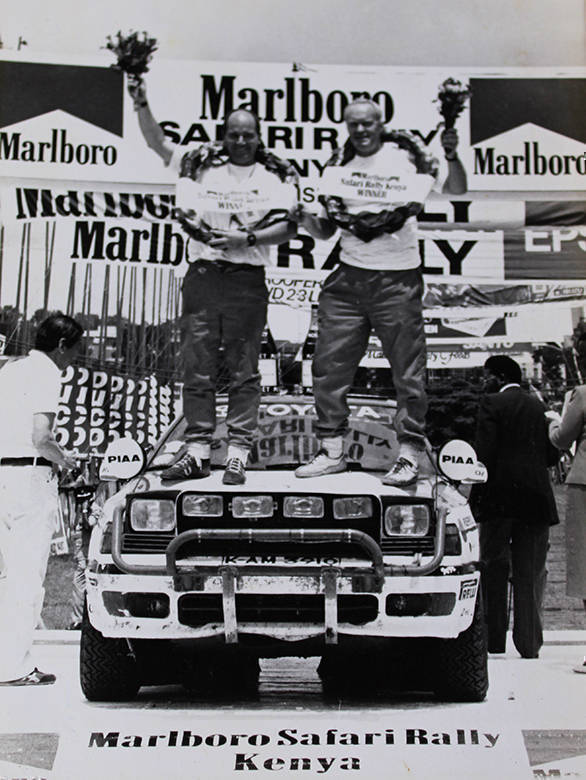 The late Björn Waldegard was the most successful foreign driver ever on the Safari, and from 18 starts took seven podiums and four wins. Only Shekhar Mehta with five has more wins. Bjorn's fourth and final Safari victory was in 1990 driving the twin-cam Toyota Celica, and this writer was fortunately there to witness this epic drive
The late Björn Waldegard was the most successful foreign driver ever on the Safari, and from 18 starts took seven podiums and four wins. Only Shekhar Mehta with five has more wins. Bjorn's fourth and final Safari victory was in 1990 driving the twin-cam Toyota Celica, and this writer was fortunately there to witness this epic drive
The Safari was once one of motorsport's most prestigious and celebrated rallies and Kenya last hosted it as a WRC event in 2002, when the late Colin McRae won it. Having been to the Safari Rally twice (1988 and 1990), when I drove over almost the entire route, I think its return to the WRC is the best thing that could have happened to the sport of rallying.
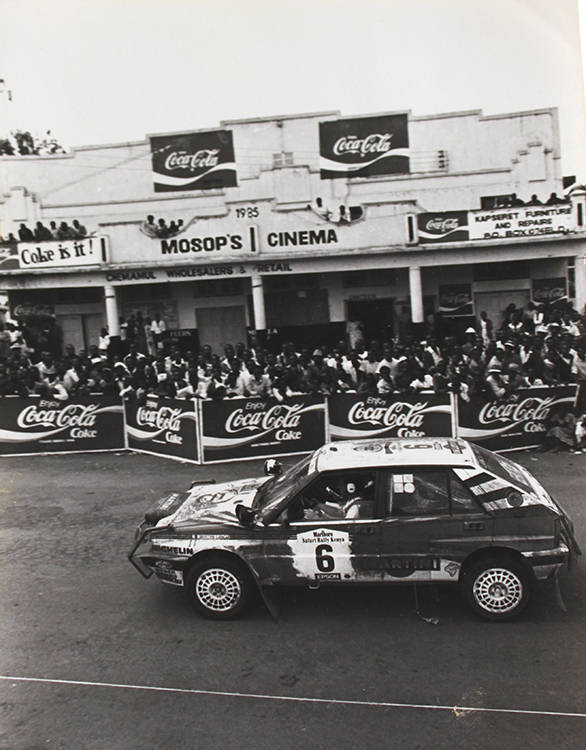 Back then, the Safari Rally even halted at the ancient trading coastal town of Mombasa. As the rally was run mainly on dirt tracks, the cars got really dirty and participants had to keep cleaning their competition number stickers to enable organisers to identify them!
Back then, the Safari Rally even halted at the ancient trading coastal town of Mombasa. As the rally was run mainly on dirt tracks, the cars got really dirty and participants had to keep cleaning their competition number stickers to enable organisers to identify them!
While the requirements of modern day rallying and the rules and regulations may not allow the Safari to present the kind of legendary challenge it did in the past, there is no doubting the fact that the Safari will continue to be unlike any other rally. Hopefully we will again see those legendary contests and an all-new generation may possibly get to understand why it was considered to be the toughest rally and a true test of both man and machine.
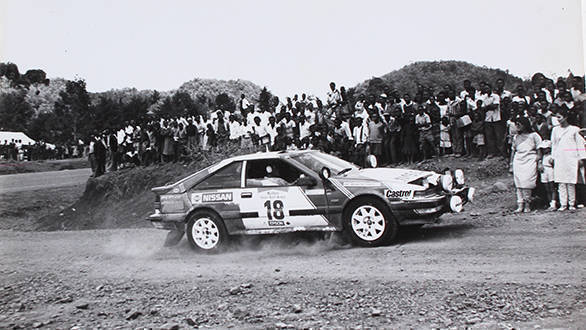 The Safari always drew massive cheering crowds all along the route. Many Kenyans of Indian descent have also always been closely associated with this event and here you can see Indian ladies dressed in salwar kameez watching the action along with their kids.
The Safari always drew massive cheering crowds all along the route. Many Kenyans of Indian descent have also always been closely associated with this event and here you can see Indian ladies dressed in salwar kameez watching the action along with their kids.
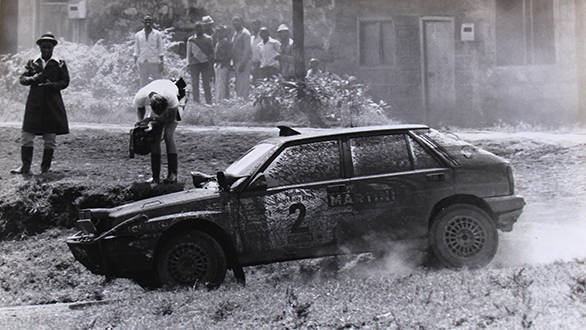 Miki Biasion's victory at the 1988 Safari in the Delta HF Integrale, was one of Lancia's most valued motorsport wins.
Miki Biasion's victory at the 1988 Safari in the Delta HF Integrale, was one of Lancia's most valued motorsport wins.
Even as I write this, the final route of the 2020 Safari Rally is being fine-tuned as it has to be presented to FIA for final approval before January 30. Obviously given the way present day rallies are run, the route will be a lot shorter and nowhere close to what was seen in its earlier avatars. Helping the Kenyan officials set the route are WRC Wales Rally GB (earlier known as Rally of Great Britain) Clerk of Course Iain Campbell and Joao Passos from WRC Portugal. They have been going through proposed routes in Naivasha and areas near Nakuru, along with the Safari Rally Clerk of Course, Gurvi Bhabra.
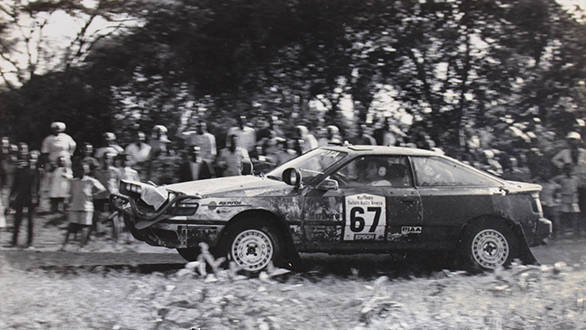 Toyota has scored eight wins on the Safari and three out of the four wins of Björn Waldegard, were in a Toyota.
Toyota has scored eight wins on the Safari and three out of the four wins of Björn Waldegard, were in a Toyota.
The route will also focus on accommodating the WRC Promoter global television coverage format, which is expected to reach over 70 million people worldwide. If you are a true motorsport fan, you will do well not to miss seeing one of the most historic of car rallies ever. And the reason we have only published black and white photographs from the earlier Safari Rallies, is because it might just give you a little glimpse of the "Glory of the Safari".
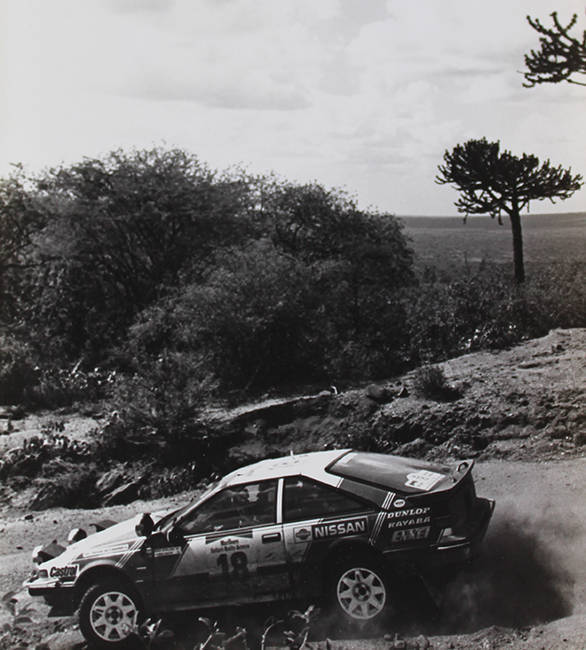 Reliability and ease of service helped Datsun or Nissan win the Safari seven times and Shekhar Mehta scored all his five wins driving either a Datsun or Nissan.
Reliability and ease of service helped Datsun or Nissan win the Safari seven times and Shekhar Mehta scored all his five wins driving either a Datsun or Nissan.
Legend of the Safari
The East African Coronation Safari was first held in May 1953, to celebrate the coronation of Queen Elizabeth II. It ran through Kenya, Uganda and Tanganyika (Tanzania). These countries gained independence by the 1960s, after which the rally was renamed the East African Safari Rally. In 1971, Hannu Mikkola and Gunnar Palman in a Ford Escort RS 1600 became the first all foreign team to overcome the challenge of the locals led by the likes of Vic Preston Sr, Joginder Singh, Bert Shankland, etc. By 1975, it was limited to Kenya and renamed the Safari Rally.
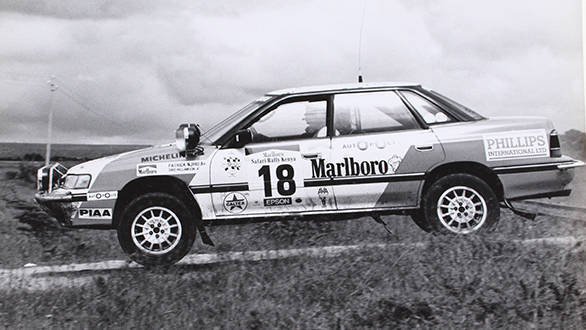 Subaru was also a regular at the Safari.
Subaru was also a regular at the Safari.
It also became part of the World Rally Championship and the world's best drivers now competed with local experts like the Kenyan of Indian descent, Shekhar Mehta, who went on to score five fabulous wins! Joginder Singh, the Kenyan champion, was the first driver to win the Safari three times and was also one of the first "Flying Sikhs". In fact Indians, particularly the Sikh community, have always been closely associated with the Safari Rally, either as participants or as officials assisting the organising team, and of course as spectators travelling deep into the African bush to watch the speedy action. Even today, Kenyans of Indian descent are closely associated with the Safari Rally and the winner of the 2019 Kenya National Rally Championship was Baldev Singh Chager. They even have an event known as the Guru Nanak Rally!
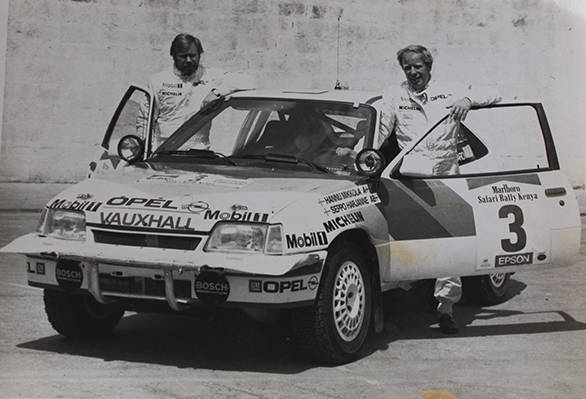 Hannu Mikkola participated in several different cars including an Opel. In 1972, he and Gunnar Palm in a Ford Escort RS 1600 became the first all-foreign team to overcome the challenge and total dominance of the locals at the Safari. Mikkola scored another win in 1987, driving the Group B Audi Quattro.
Hannu Mikkola participated in several different cars including an Opel. In 1972, he and Gunnar Palm in a Ford Escort RS 1600 became the first all-foreign team to overcome the challenge and total dominance of the locals at the Safari. Mikkola scored another win in 1987, driving the Group B Audi Quattro.
From 5,300km in 1973, the rally route gradually shrunk with every passing year, but the Safari remained the longest event in WRC and was the only one run entirely on open public roads! Weather played a most important part as did fast but restrained driving. Wet weather meant mud. A lot of it. And if it was dry, it meant dust. Again a lot of it. Animals both wild and domestic were always a danger and it was the only rally where you saw cars with daytime running lights (Yes, the original DRLs) mounted ahead of the A-pillars. The lights were almost at eye level with the animals, allowing them to pick the fast moving object earlier. But, obviously this did not always happen and stories of cars running into zebras, antelopes, hyenas or even lions, were not uncommon! Some even reported being chased or attacked by elephants and rhinos!
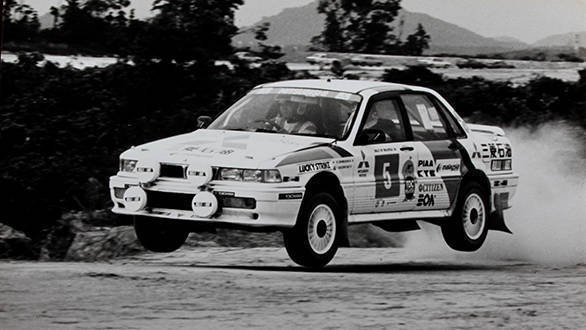 Even though the route was all dirt, the cars often hit speeds in excess of 200kmph and even got airborne.
Even though the route was all dirt, the cars often hit speeds in excess of 200kmph and even got airborne.
Subsequently, the richer teams used helicopters to warn drivers of hidden dangers. The fast dirt roads meant speeds in excess of 200kmph sometimes, even through villages crowded with enthusiasts! The fast pace and treacherous terrain caught out even the best and for many champions this was the event to win. But teams had to make major changes for the Safari as it was completely different from other WRC events, and eventually the high costs and preference for shorter events resulted in its exit from the WRC in 2002. All were disappointed, but the fact that it called for more resources than any other rally, could not be denied. But at the local level, the Safari continued to be run as a classic rally and every March some legendary cars and drivers from the past were seen trying to relive the glory of the Safari. Fortunately for all Safari Rally fans, it has returned to the WRC to rekindle some of the staggering action at what will surely go down in history, as the world's most amazing rally.


